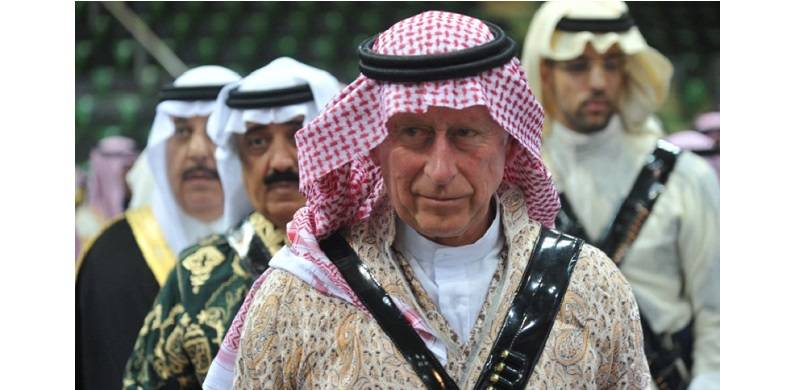
In October 1993, I was witness to an event of great historic significance: Prince Charles delivering a widely publicised and much-anticipated lecture on the subject of Islam and the West at Oxford University. As I took my seat in the front row of the Sheldonian Theatre, I noted the high calibre of the audience: the Aga Khan, the Saudi ambassador, and many other dignitaries. The atmosphere was electric as Islam was already, in the early 1990s, a much-debated subject; war had just ended in Iraq and was starting in Bosnia, and there were signs of growing Islamophobia in Europe. People were curious to know what the future king of the realm made of the subject.
The prince plunged into his thesis: Muslims – and this he knew would surprise people – had made great contributions to the West and were part of it. Charles ran through a checklist of subjects in which Muslims had contributed—philosophy, astronomy, medicine, literature. He mentioned the Andalusian philosopher Averroes among others. Cordoba, “this great city of cities,” he said, then “by far the most civilised city of Europe,” had hundreds of thousands of books in its libraries when the biggest European libraries could boast of a scant few hundred. Jews, Christians, and Muslims lived, worked and created in harmony for long periods of time. Charles passionately argued for the unified vision of life that Islam promoted and criticised the materialism and cynicism of our age. He even cited my favorite saying of the Prophet (PBUH) of Islam: “The ink of the scholar is more sacred than the blood of the martyr.”
It was a marvelous exposition of what is called convivencia or coexistence. Charles was doing more than paying tribute to the past; he was reconciling it with modernity. Having had the honour of having met the prince on several occasions, I knew firsthand his commitment to this cause. After the lecture, the audience rose to give the prince a standing ovation.
Some of the greatest monarchs of Europe have been models of interfaith champions in the context of the concept today. Among the many at hand, take for example, Alfonso X of Spain, Roger II of Sicily and the Holy Roman Emperor Frederick II
Charles was known for his compassionate imagination in alerting the world to the dangers of climate change and the environment, in reaching out to the minorities and the vulnerable, and close to his heart, visiting houses of worship of different religions and inviting religious leaders to meet him. His graciousness and kindness are what were normatively associated with royalty. Take this letter he wrote to my daughter Dr. Amineh Hoti after she sent him a book on interfaith dialogue. In one letter he expressed his warmth to both daughter and father:
“Highgrove House
5th February 2017,
Dear Dr. Hoti,
I just want to write and thank you for sending me your marvelous book “Teaching Acceptance.”
It really was immensely kind of you, and I am very heartened to see that your work of promoting interfaith understanding is proceeding so tirelessly, despite all challenges.
Please give my kindest regards to your dear father, whose steadfast support for peace and reconciliation over so many years has been a constant inspiration. And do tell him not only that it has been far too long since I have seen him and that I do hope I shall see him again before we all get too old, but I still wear the wonderful Pakistani coat he gave me whenever I am in the garden at Highgrove during the Winter!
With my very best wishes –
Yours most Sincerely
Charles.”
There will be those who argue that this was all very well when he was the Prince of Wales. As a monarch he must be more restrained and less accessible; royalty must be glimpsed but not heard too often or too loudly. These critics have not read European history. Some of the greatest monarchs of Europe have been models of interfaith champions in the context of the concept today. Among the many at hand, take for example, Alfonso X of Spain, Roger II of Sicily and the Holy Roman Emperor Frederick II.
Charles passionately argued for the unified vision of life that Islam promoted and criticised the materialism and cynicism of our age. He even cited my favorite saying of the Prophet (PBUH) of Islam: “The ink of the scholar is more sacred than the blood of the martyr”
Alfonso X of Spain called himself the King of the Three Religions in the 13th century. When I visited Sicily as part of my “Journey into Europe” project with its focus on Islam in Europe, we heard about extraordinary figures from the past like Roger II, the powerful 12th-century Christian king of Sicily who ruled after the Muslims lost Sicily. The King had a deep love for Islamic culture, spoke Arabic, was protected by Muslim bodyguards, and had Arabic on his royal mantle. Coins in his Sicilian kingdom were inscribed “King Roger, powerful through the grace of Allah” in Arabic. Roger II ensured that each religious community in Sicily—Muslims, Jews, and Christians—could preserve its own laws and customs. Ibn al-Athir, a 12th-century Muslim scholar from Mosul, wrote that Roger “founded a Court of Complaints,” to which Muslims “who had been unjustly treated brought their grievances.” The King “would give them justice, even against his own son.”
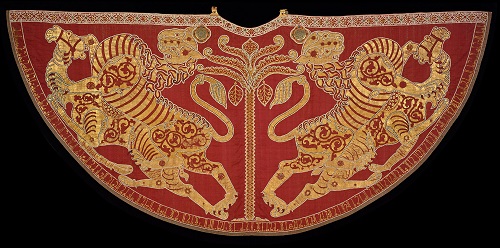
In history, Roger II is known for seeking knowledge, commissioning major translations of texts, and summoning, in the words of the twelfth century archbishop and diplomat Romuald of Salerno, “men of wisdom of different sorts from the various parts of the earth.” Of all of them, the most famous was the scientist and geographer al-Idrisi, who was born in North Africa and educated in Cordoba. Roger and al-Idrisi were great friends. Such was the King’s respect for the Muslim scholar that when al-Idrisi entered the room, Roger would stand up.
King Roger II’s greatest glory was the chapel he built in Palermo, the Sicilian capital, which is a wonderful monument to convivencia. In the chapel, Christian, Jewish, and Islamic influences intermingle and overlap in luminescent colours and intricate designs. Sicilians are proud of the chapel. A Sicilian author and bookshop owner we met in Palermo called it “the symbol of Sicilian culture, because in this church all cultures in this island are represented.”
The spectacular wooden ceiling of the Palatine Chapel was built by Muslim craftsmen. A recent Italian book on the chapel, The Palatine Chapel in Palermo, states, “There is nothing like the painted wooden ceiling over the Palatine Chapel’s central nave anywhere else in the world.” Throughout and around the ceiling’s images, which are painstakingly painted, are Kufic Arabic greetings of good health, victory and joy.
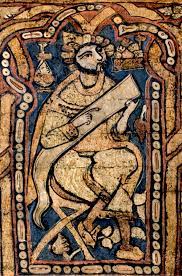
Some of the numerous images depicted on the roof panels which reflect Muslim influences include Roger II sitting in the manner of an Islamic ruler; scenes of court life; depictions of music, musicians, and typically Arab musical instruments; depictions of mythological beings from Muslim cultures; scenes from Muslim lore; and two turbaned men playing chess, a game that was introduced to Europe by Muslims.
And there was Frederick II, one of the most powerful rulers of Europe in his time who lived from 1194 to 1250. So great was his reputation in learning and humanity he was widely known as stupor mundi or “wonder of the world.” Raised in Sicily, which had a large Muslim population, he spoke numerous languages including Arabic, had a Muslim bodyguard, and his coronation mantle, which bears Arabic inscriptions, was the coronation mantle for every Holy Roman Emperor until the 18th century.
The emperor showed respect for minorities like Jews and Muslims, promoted the work of the great Andalusian Muslim philosopher Ibn Rushd, or Averroes, and was known to celebrate festivals associated with the Prophet (PBUH) of Islam. He was fascinated by and committed to the pursuit of knowledge and greatly respected Islamic learning, often writing to the greatest rulers in the Muslim world to seek their responses to important philosophical questions. The unusualness of a Christian king seeking these kinds of relationships during the Crusades was not lost on the Muslim rulers. They answered Frederick in good faith and bonds grew between Europe and the Muslim world in spite of the tension and bloodshed of the clashes.
Frederick’s greatest triumph ― which should be taught in schools of strategy and diplomacy today ― was to use these tactics of cultural understanding and respect to successfully take Jerusalem for Christianity. In doing so, Frederick accomplished the dream of every Christian ruler of Europe since Sultan Saladin, one of the most prominent Muslim political leaders of the time, had recaptured the city from the Christians decades earlier, in 1187, ending almost a century of Christian rule.
And we don’t have to only draw examples from other monarchs in Europe. The greatest role model for Charles is his own mother, the late great Queen Elizabeth. What she said and how she behaved made her the global symbol of the great Commonwealth of Nations comprising of people of different colors and religions who she believed could still unite in broad harmony. They in turn appreciated the queen as a symbol of harmony and friendship providing them dignity and an embrace in a common humanity.
At the Sheldonian, I felt we were at a special moment in history. If not at the apex of the relationship between Islam and the West, at a time of optimistic possibilities, we were heading in that direction. Charles would go on to give similar lectures elsewhere and even to propose that the monarch, given the multi-religious nature of the nation, adopt the title of “Defender of the Faiths” rather than “Defender of the Faith.” Demonstrating his penchant for convivencia, Charles wore a special Jewish kippa with the emblem of the Prince of Wales to events involving the Jewish community and appeared in local dress in various Muslim countries.
The pendulum was moving steadily and visibly toward closing the gap between Islam and the West. It appeared that Western liberal democracy, which embodied the very notion of modernity with its respect for the rule of law and individual rights, had triumphed, causing leading commentators like Francis Fukuyama, the American political scientist, to declare the “end of history.” The United States had emerged as the sole super-power, and the United Kingdom and Western Europe were basking in its economic prosperity and supreme military might. It was difficult to escape the conclusion that countries in the future would follow the route of Western liberal democracy with an inclusive approach to minorities.
In the spirit of convivencia, I was able to make a small contribution to building bridges during this period through several initiatives. In 1993 the BBC broadcast Living Islam, a six-part TV series, and published the accompanying book; nothing on this scale had been done before on Islam with a Muslim presenter. My book Postmodernism and Islam was nominated for the Amalfi Award. I became the first Muslim Cambridge don to speak at evensong at a college chapel and the first Muslim to give the annual Rabbi Goldstein Memorial Lecture at London’s Liberal Jewish Synagogue in 1999. I was also the Muslim commissioner on the Runnymede Trust Commissions on anti-Semitism and later on Islamophobia, which would be a catalyst for interfaith initiatives.
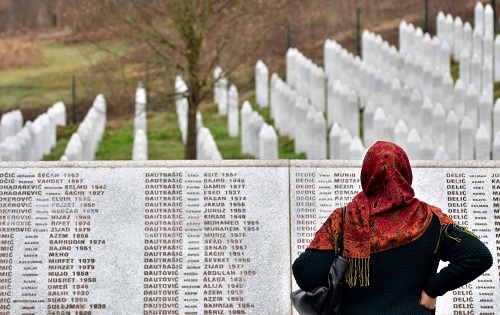
Also in the 1990s, I completed a quartet of projects I had conceived about Muhammad Ali Jinnah, the founder of Pakistan, who had envisioned a modern, pluralist state: a feature film starring Christopher Lee; a documentary broadcast on Channel 4; an academic book; and a graphic novel. My book, Islam Today: An Introduction, was launched in the Moses Room of the House of Lords in front of a packed audience and with several lords present including Bernard Weatherill, Melvyn Bragg, Nazir Ahmed, Christopher Smith, Jeffrey Archer and Pola Uddin. I appreciated the fact that there were Jewish, Christian, and Muslim lords present. The historic nature of the event was captured in the front page story of The News on 19 February 1999, which described the standing ovation given by the overflowing, enthusiastic audience, and in its headline: “Lords book launch marks new point in search for lasting relationship between Islam and the West.” As a result of my activities, I was being recognised in both the East and the West: I was awarded the Star of Excellence in Pakistan and the Sir Percy Sykes Memorial Medal by the Royal Society for Asian Affairs in London.
Sitting in the Sheldonian listening to the hopeful message of Prince Charles, I was lulled into dismissing the dire warnings of Muslims who wrote of their communities being prepared for the gas chambers of Europe as the product of a fevered imagination. “The next time there are gas chambers in Europe, there is no doubt concerning who’ll be inside them,” noted Shabbir Akhtar in The Guardian in 1989. Kalim Siddiqui warned of “Hitler-style gas chambers for Muslims” and Mohammed Ajeeb, the former lord mayor of Bradford, received a letter stating, “What you deserve is the gas chambers.” Someone in Hanif Kureishi’s 1990 novel The Buddha of Suburbia remarks that “the whites finally turned on the blacks and Asians and tried to force us into gas chambers.” The genocide in the mid-1990s in Bosnia appeared to confirm the worst fears of the Muslims, although its impact was limited because it was happening on the periphery of Europe.
Little could I have guessed that within a decade the pendulum would swing precipitously toward confrontation and conflict. The September 11 attacks were the catalyst, and Islam came to be identified as the main source of Europe’s problems; Islamophobia grew exponentially. Inevitably, anti-Semitism also reemerged, with German politicians, for example, talking of the “domestic or internal enemy,” meaning the Jews, and the “external enemy,” a reference to Muslims. Even American pop stars sounded the alarm, with Madonna in 2015 warning that Europe “feels like Nazi Germany.”
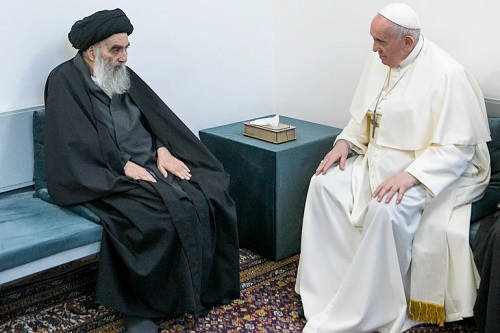
The scales are evenly balanced in Europe today. On the one hand, we have heavyweights like Orbán of Hungary openly decrying and rejecting foreigners to his land, on the other is Pope Francis, ready to embrace the same foreigners. As those in the former category gain ground, such as Le Pen in France and Geert Wilders in Holland, the accession of King Charles adds considerable weight to the latter. It will not be a “slam dunk,” to use the phrase American advisers to the president of the US used to predict the outcome of the Iraq war. The challenges Charles faces are many; but few monarchs are as well equipped for his job as Charles. The question to ask is will Charles live up to his potential and aspire to be stupor mundi?
Based on his past track record, Charles’ commitment and sincerity to his causes, however understandably toned down in his new role, will be a huge asset for those who wish for a more harmonious, peaceful, just and compassionate world. The key for Charles is not to be cramped in his style. Let Charles be Charles. Those of us yearning for just such a future can give a full-throated cheer for King Charles III, Long Live the King!

